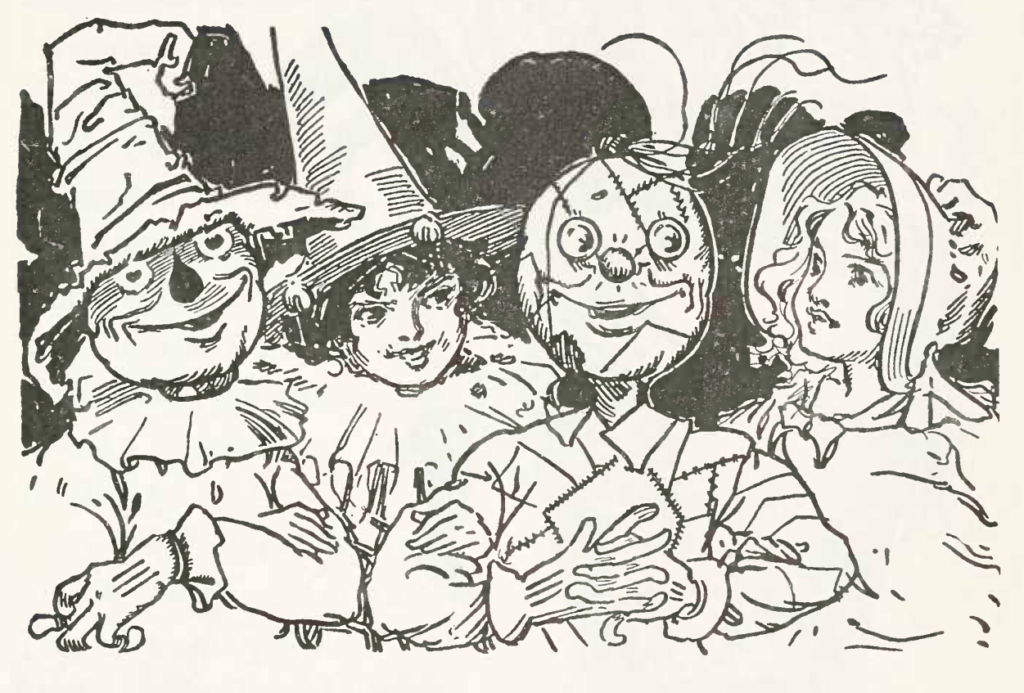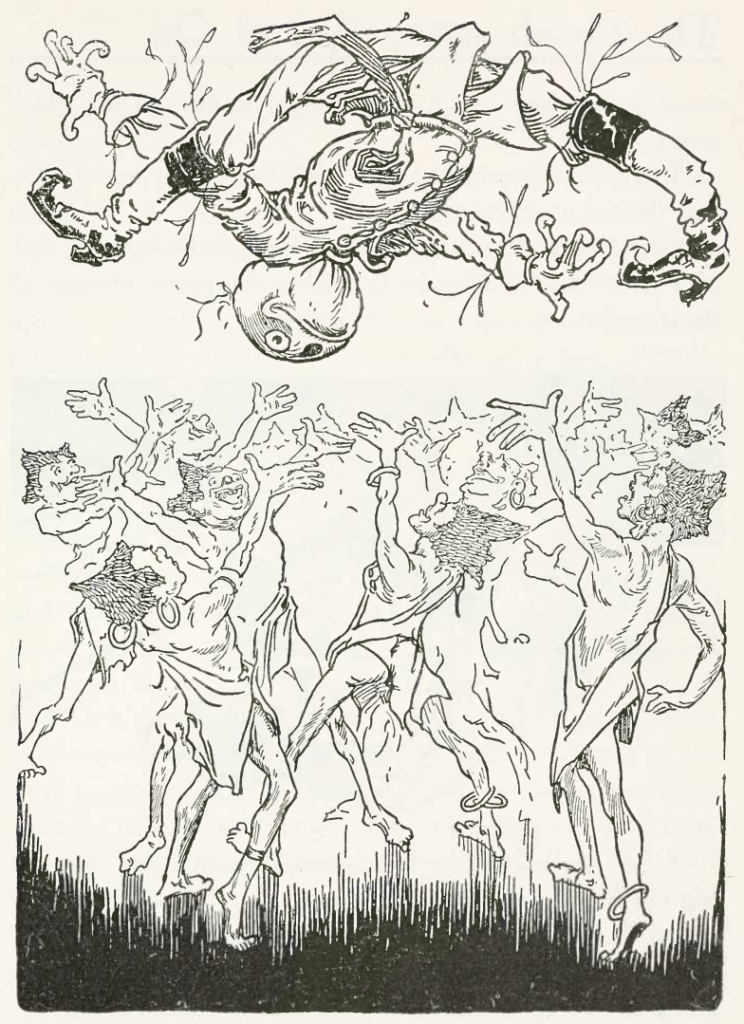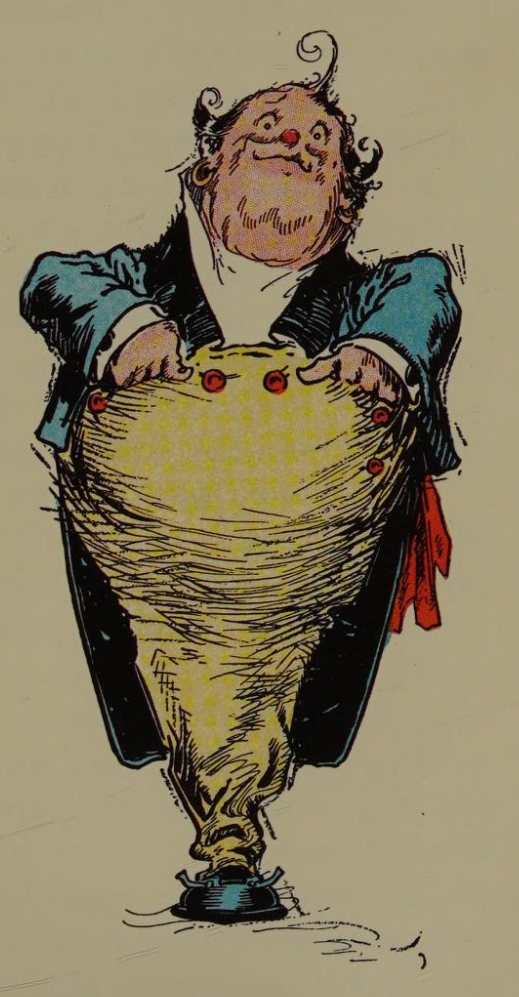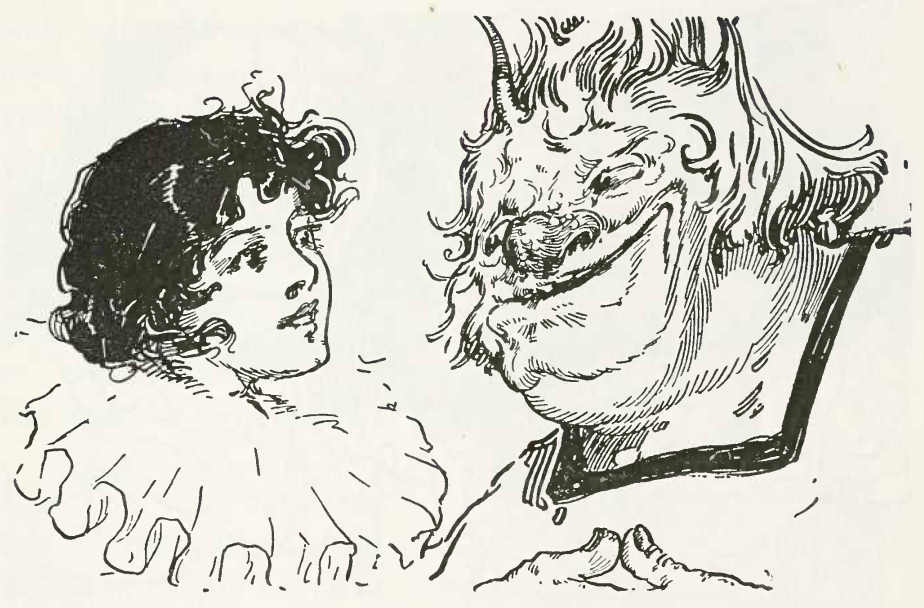The Second Half

The second half of the novel, the journey from the Emerald City south to the dangerous Quadling Country, features plenty of new ideas and settings. The new protagonist party of Ojo, Scraps, Dorothy, and the Scarecrow (I guess Toto is around too) never achieve the chemistry or dramatic promise of the initial grouping. Dorothy has no further character elements to develop and is too well-established to change. So is the Scarecrow, who has completed whatever arc he had six whole novels ago by believing himself brainy and then stepping down as king. Baum has him tag along only to be the victim of repeated slapstick violence. There is a frightening encounter with the giant Yoop (whose wife is an important character in The Tin Woodman of Oz) and a surprisingly grounded sojourn with a Quadling couple. Otherwise, the tone loses the edge and the drama to become predominately silly comedy.
An unfortunate addition to Quadling Country are the Tottenhots, childlike people who inhabit black dome-shaped houses. Their name is derived from an offensive term for the Khoekhoe people. Baum describes them in stereotypical “native” dress, calls them “dusky” (244) and “little brown folks” (246), and portrays them as childish and work-hating in a way derived from racist stereotypes of Black Americans. While hardly a shock for 1913, when popular American media took mocking Black people for granted, this is definitely one of the uglier moments in Baum’s canonical Oz novels. (My William Morrow and Company Books of Wonder edition preserves the Tottenhot sequence. But earlier, some editor rewrote the minstrel show-influenced lyrics of a song called “My Lulu” to no longer call someone “coal-black,” so I wonder what the rationale was.)

Later, Ojo and his companions discover two cave-dwelling countries inside a mountain. This seems like a promising place in their hunt for the dark well. The first of these peoples, the Hoppers, have a single leg each and hop around like pogo sticks. “Walk! Who wants to walk?” says Hip Hopper, first Hopper we meet. “Walking is a terribly awkward way to travel. I hop, and so do all my people. It’s so much more graceful and agreeable than walking” (274). The second group, the Horners, each have a single horn in the center of their forehead. The Hoppers are at war with the Horners—a war in which nobody is hurt or dies—because they misunderstood a cornball pun. Dorothy willingly participates to achieve her goals, pretending to take Hip Hopper prisoner.

A few chapters of comedy hijinx resolve the conflict, but what is more likely to alarm a modern reader is that the underground city of the Horners glows. Why? Because they coat the interiors of all their buildings with radium! The city is so radioactive it glows brightly! Dorothy has a few more days to live, tops. “They found themselves in a vast cave which was dimly lighted by the tiny grains of radium that lay scattered among the loose rocks” (300). OH NO. No wonder this ends my Oz reading series: the remainder of the novels concern Dorothy, Ojo, and Toto dying of radiation burns. Well, I’m sure brightly glowing radioactive material is good for you since the Chief Horner tells Scraps that it is medicine (288). Perhaps the Horners are sustaining brain damage that causes them to enjoy bad puns as much as they do (this is coming from me, a pun enthusiast).
